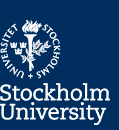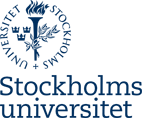
Link to the Zoom event
https://stockholmuniversity.zoom.us/j/66438941618
(Instructions on how to install Zoom are at the bottom of this page.)
Title of thesis
Integrated teaching for expanded vocational knowing.
Studies in the Swedish upper secondary Health and social care program
Opponent
Professor Petri Nokelainen, Faculty of Education and Culture, Tampere University
Examining Committee Members
Professor Per Andersson, Department of Behavioural Sciences and Learning, Linköping University Associate Professor Ingrid Henning Loeb, Department of Education, Communication and Learning, University of Gothenburg, Associate Professor Cormac Mc Grath, Department of Education, Stockholm University and the deputy committee member Associate Professor Wieland Wermke, Department of Special Education, Stockholm University.
Supervisor and Chair of the defence
Professor Lázaro Moreno Herrera, Department of Education, Stockholm University.
Assistant Supervisors
Associate Professor Marianne Teräs Department of Education, Stockholm University and Senior lecturer Janet Mattsson, Red Cross University, Stockholm.
Thesis description
Integrated teaching is emphasized in Swedish upper secondary vocational education and training, for managing sociocultural and historical changes related to: a) increased demands on future competent health care workers, b) educational reforms, c) altered conditions for vocational teachers’ work, and d) vocational contextualization of teaching and learning content. However, national curricula from 1970, 1994, and 2011 recommend integrated teaching as a solution without any specific concretization of what integration could or should contribute with. Thus, the aim of this thesis was to explore the realization of integrated teaching and the vocational knowing made available by integration for students at the Swedish upper secondary Health and social care program, and partly for nursing students in higher education and training. The research questions attended to how integrated teaching is realized, and what vocational knowing is made available by integration. Theoretical point of departure was Cultural historical activity theory (CHAT), complemented with New literacy studies (NLS). The methodological framework included ethnographically inspired case studies, interviews, specifically semi-structured interviews and life-history interviews, and a systematic review. Research material was collected in 2012 and 2018. Analysis was performed with selected concepts from CHAT, and in one study also with concepts from NLS. In one study, i.e. the systematic review, GRADE CERQual was used for an assessment of confidence in the review findings. Study results showed that integrated teaching, regardless of composition and format, made available a vocational, a general, and an expanded vocational knowing. Also, vocational contextualization of school subjects was shown to be significant as an additional teaching and learning content and as mediational means between school and workplace.
In conclusion, integrated teaching was shown to respond to the sociocultural and historical developments by making available for students an expanded vocational knowing. Also, vocational contextualization was shown to make possible for students learning knowing relevant for their future profession.
Instructions on how to install Zoom
If you have already installed Zoom, just follow the on-screen instructions. You can also follow the defense without downloading the Zoom application. Then choose Cancel and follow the fine print link Join from your browser at the bottom of the dialog page. If the link does not work with your regular browser - try copying the meeting link into another browser, such as Chrome. When you have progressed, you may need to enter your name and click that you are not a robot to enter the Zoom meeting.
If you want to install Zoom, you can follow the on-screen instructions - note that it will take a while and you will probably need to click the meeting link again after installation.



